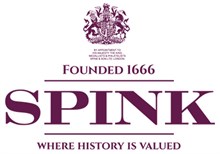Sold by Order of a Direct DescendentThe Outstanding Collection of Medals to the Strange/Strang family, spanning six generations from the Battle of Waterloo to the Malayan EmergencyA History of the Strang FamilyThe Strang family is one of the oldest in Scotland, dating back to around 1100. The Strangs of Balkaskie are mentioned as, 'gentlemen of ancient lineage and fair estate in the eastern neuk or corner of Fife, holding also lands in Tweedale some four centuries ago'. King Robert II of Scotland granted to William Strang the right to pasture sixty oxen and cows, three hundred sheep, and four horses, belonging to his lands of Kynaldy and Petardy on the moor of Crail, and to cut there forty cart-loads of broom. The Balkaskie branch of the Strang familyIn 1362, John Strang, of Balkaskie married Cecilia Anstruther, of the little fishing harbour of Anstruther, her brother granting a charter of lands in Anstruther to the couple, likely as a wedding present; this was later confirmed by King David II. From William Strang of Balkaskie, in 1438, the line can be traced until the estate was sold in 1615. The title deeds of the original lairdship of the Strangs, now in possession of the Anstruther Baronets, confirm the alienation of the old barony under a weight of debt soon after the union of the crowns. Looking to the military and church as a focus for endeavour, John Strang of Balkaskie fell at the Battle of Pinkie Cleugh on 10 September, 1547, a day of slaughter so fatal to Scottish chivalry, whilst another landless heir of the name, John Strang, rose during the German wars to be Lieutenant-Colonel of Cochran's Scotch Regiment. The parent stem around this time having been blighted, and probably cut short, the Lord Lyon accepted as its representative a branch transported to Orkney. At the Reformation, Sir Magnus and Sir George Strang were respectively prebendaries of St. Colme's and St. Andrews on the islands. Sir Magnus Strang also held the ecclesiastical dignity of subchantor, or 'succenter,' of Orkney, from about 1544 until his death in 1565.In 1615, the Balkaskie estate was sold by John the elder and his son, John the younger. The coheiresses of the line remained seated at Pitcorthy for many generations, and one son, Alexander, Provost of Forfar, sat in Parliament from 1645-48. In 1647, Alexander, a stout Royalist, made an unrestrained public protest against the Act for the delivery of King Charles I to the English and walked out of the Chamber. Thus, he set up, both for himself and for Forfar a score which was settled four years later, when one Captain Buchan, a Cromwellian informer, was seized and thrown into the local jail. The Parliamentarians, then in possession of Dundee, sent Colonel Orky and a troop of dragoons on a punitive expedition; they released the spy, harassed the town and burned all the writs and records. This pillage however was made good in 1665 - when Charles II, with a special word of gratitude for the "faithful testimony" of Provost Strang, restored the Burgh's charter. In the meantime however, Strang's son, Hercules, had fled to Stockholm where he became a successful merchant and married a Swede, Anna Schrymfier.The Burnhouse branch of the Strang familyOwing to the wholesale destruction of church records in the disastrous Scottish wars of religion, it has been impossible to trace the Burnhouse branch of the Strang family before 1600, however it is interesting to note the appearance in the nearby County of Lanarkshire, of Robert, the first of the Burnhouse Strangs, already a man of some substance, at about the time when the Balkaskie estates were sold. Born circa 1600, of Meikle Ernock, East Kilbride, in 1666 he passed the title of Laird of Burnhouse on to his son, Matthew Strang, who in turn passed it on to his son, Captain James Strang; in the rebellion of 1715 he raised a company for the King among his tenants, and served with it, as did many others of the Strang name.Denistoun's memoirs of the family of Strang offers letters and details of his descendant, Sir Robert, the celebrated artist engraver, who fought at Culloden in 1746, in the Jacobite bodyguard of Prince Charles. He clandestinely married Isabella Lumsden the next year, and owed his life to concealment under her ample skirts and hoops as worn during the period when he was attained for rebellion, and searched for by the King's troopers.The title Laird of Burnhouse subsequently transferred to Captain Alexander Strange. Commissioned into the Army, he was the first to take the final 'e' of the surname, which was finally removed by deed poll on 16 April, 1916, by his great-great-grandson, Captain H. St. J. B. Strang. An illustrious soldier who served at Waterloo, his descendants would serve the Crown for the next 150 years, as exhibited by this fine collection of family Medals.I hope that collectors enjoy reading the following stories as much as I have enjoyed writing them up. Iain Goodman.The Waterloo Medal awarded to Captain A. Strange, 13th Light Dragoons, late 51st Foot, who had the misfortune to be taken prisoner of war at the Battle of Maya, but then went on to serve at Waterloo and with the Army of OccupationWaterloo 1815 (Paymaster A. Strange, 13th Reg. Light Dragoons), initial privately corrected, fitted with original steel clip and replacement bar suspension, toned, nearly extremely fine. Subject to 20% VAT on Buyer’s Premium. For more information please view Terms and Conditions for Buyers.
An invoice showing the total amount due, including buyer’s premium, taxes, postage charges and other fees will be sent to buyers directly by Spink.
For full details please see the Spink Terms and Conditions for Buyers.
Taxes may vary, so ensure that you pay attention to the location of the sale in relation to your own location
.
Please see here at the end of the document.
Vollständige AGBs






